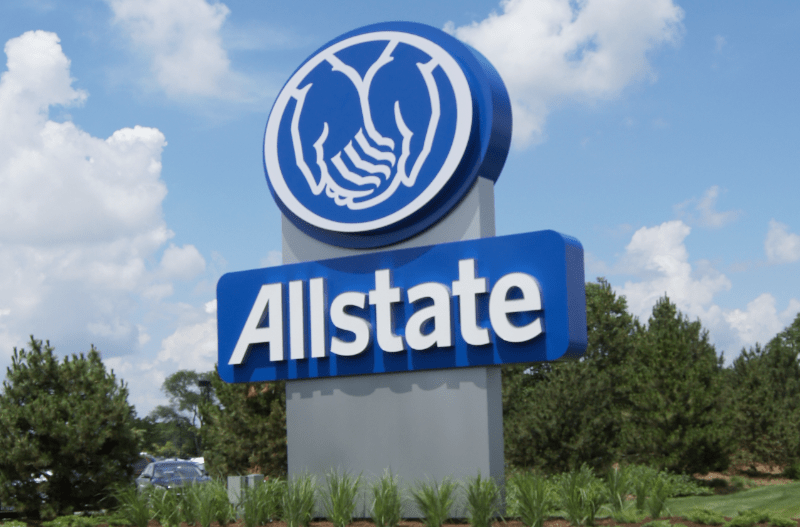Allstate considers aggregate stop-loss reinsurance top-up to cap volatility

US primary insurer Allstate is considering buying more reinsurance, likely in aggregate stop-loss form, in order to cap the volatility its results are suffering from severe weather and cat loss activity, as well as possibly other loss effects.
This is according to the insurers’ CFO Jesse Merten who discussed the fact the insurer is actively considering buying more reinsurance to protect its results, reduce its required capital and remove volatility from the business.
Allstate had already suffered almost $3.05 billion in catastrophe losses during its current annual aggregate reinsurance risk period, which began at April 1st.
The annual aggregate reinsurance tower Allstate has in-force for this risk-period relies solely on annual aggregate catastrophe bonds in-force that would attach at $3.4 billion of qualifying losses.
However, those lowest down Sanders Re cat bonds of Allstate’s, which attach at $3.4 billion of qualifying losses, feature a $50 million event deductible.
Where as Allstate’s reported cat losses are from a lower base level, which we understand to be around $1 million.
So, while the insurer has reported $3 billion of losses, it could actually be some way away from hitting the $3.4 billion of qualifying losses needed to attach and recover from the reinsurance provided by the aggregate Sanders Re catastrophe bonds.
Which may go some way towards explaining why it is interested in a cover that can protect its capital against further weather and catastrophe volatility.
Allstate CFO Jesse Merten said at a recent investor conference, as reported by BMO Capital Markets analyst Michael Zaremski, that the company is exploring potential solutions to cap volatility.
“he reinsurance option that I mentioned in my prepared remarks, we could buy additional reinsurance, think aggregate stop-loss coverage that basically reduces our required capital because we take volatility and risk out. So, that’s a capital reduction that would then flow through our model to create additional capital,” Merten said.
Going on to add that this could help to rebuild contingent reserves for Allstate.
The Allstate CFO also said, “We’re comfortable that we have the capital that we need to operate the business through the cycle, and I’m very confident that we have power to rebuild any capital that’s been eroded.”
On what the insurer is considering buying, Merten explained that it would be, “A bit further out in the tail that gives us total capital relief and it’s also an aggregate. So, when we talk about aggregate in our standard program, it’s aggregate catastrophe loss coverage and this would be aggregate loss coverage and not just catastrophe.
“But, yeah, it’s going to be a little bit out in the tail in comparison, but what that does is significantly reduce the volatility of earnings that we retain for those outside of 1 in 100 events.”
So this is definitely targeted at reducing volatility in the business from the smaller sized severe weather loss events and potentially for other lines coverage as well.
BMO analyst Michael Zaremski estimated that Allstate may need to pay around half a billion dollars for an effective aggregate stop-loss reinsurance arrangement that provides its coverage above a catastrophe loss ratio of somewhere in the region of 7.7% and 11.3%.
Under Zaremski’s scenario, such a stop-loss aggregate reinsurance cover could be in the region of $2 billion of protection, Zaremski estimates, so a quite significant additional buy for Allstate.
On which basis he estimates a reinsurer would need to charge around the $500 million to generate an acceptable return.
It will be interesting to see whether Allstate revisits the catastrophe bond market to lock-in more multi-year aggregate catastrophe reinsurance as well, possibly at a lower level if the cat bond investor base would support it, or whether this turns out to be a traditional arrangement only, with one or more major reinsurance players.






